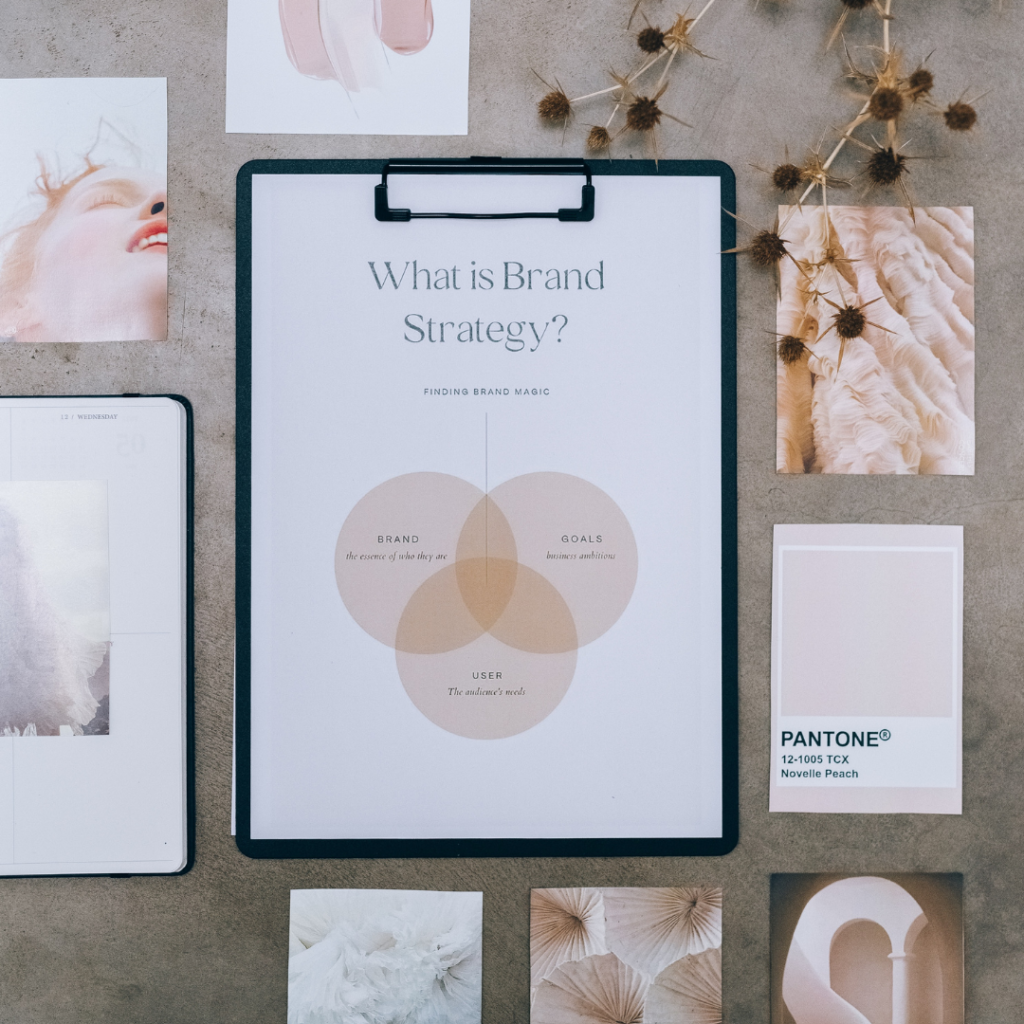
I absolutely love talking about brand strategy. In addition to your product/service or offer, branding is a powerful differentiator for you and your business and really helps you to stand out. That’s why I’ve packaged up my three essential elements in this article.
When you think about specific businesses, it’s quite common to think of them as “brands”. You likely think of Coca-Cola as a brand, Nike as a brand, and Sephora as a brand. Yes, these are all businesses, but the brands these businesses are or have created are the containers.
So before we dive into what you can do almost immediately to begin building your brand, there is something that is worth giving some thought to.
Do you need to have a “brand”?
This is a question that comes up in entrepreneurial circles and discussions, and it really throws me off. Of course you need a brand! As a service provider, you are very closely connected to your brand. You and your personality are likely mirrored in your brand. After all, when someone choose your business, they are choosing to work with you (or your team, who follow your ethos and way of working).
Brand Element #1: Design
I knew even before I started my business that my visuals would be completely different from other people, resources and businesses that emphasize strategy, management consulting, and anything in that realm. I always knew design would be a big element of my brand strategy.
If you look at all my visuals – my website, my workbooks and guidebooks, my instagram page… you’ll see that I use colors and graphics to make the content more visually appealing. That’s partly because visually appealing things keep people around for longer, giving me a better chance to help them and to start a relationship with them. And it’s also because it’s more “me”. In fact, when people at my previous job saw my website, they said “it’s so you!”. And that’s exactly what you want the design of your brand to surface. It should be a visual representation of who you are.
Brand Element #2: Language and Tonality
A common thing we see here is sounding like others in your industry. It may seem like a good plan – copying the language and tonality of people who are successful in your industry, but it really won’t translate as well.
The reason for that is people can sense authenticity, or in this case, lack of it. The people you follow who use specific language so that because it’s true to them. If you try to use the same language, it’ll likely be uncomfortable, a bit awkward and for anyone who knows what you’re really like, confusing.
So when it comes to mapping out the language and tonality in your brand strategy, you really want to think about what is going to sound like you. One of the best compliments I’ve received about my articles is that they are fun, easy to read and understand, and “like you’re having a conversation with me”. In fact, that part in the quotes was said by more than one person! That was exactly what I was going for.
Just for fun, compare my articles on strategy, business models and positioning to the more traditional sources for this information. You’ll immediately see how our languages and tonalities are different.
I want to point out that almost all strategy and business-resource information is written in this more traditional way. But I still chose to be different. And that’s because I think it can be easier to consume when it’s provided in a more friendly manner. Not to mention, more fun, and definitely more likely to be implemented!
Brand Element #3: Personality
And lastly, we have personality. Personality is a very big part of brand strategy. Similar to what I was saying about language, but taking it up one level, I’ll point out that although the world of strategy is absolutely my interest, I recognize that it is a dry, buttoned-up, corporate-focused world. Most articles on strategy are full of jargon, long and not as captivating as other topics. Most people talking about strategy don’t showcase their fun and easy-going side (do they have a fun and easy-going side?). I’m not saying my way is better. It’s just different. HBR isn’t going to lose customers because of me, and neither is McKinsey. But for the people who are interested in strategy but wish it could be delivered a different way, I’m the person they’re looking for.
You get to see my personality through my workshops, my webinars, my occasional instagram stories and other video-based social media content. When you do that, you instantly get a feel for what my brand is like – because my brand is based on me and my personality.
A brand with two founders
With businesses that have two founders, you’ll have to identify the personality, language, tonality and visuals that you want to use. Ideally, they should be a good mix of the two or more founders. They should absolutely not be so far removed from the founders that they don’t represent them well. Afterwards, a good test to see if you nailed it is to check (separately) that the founders describe the brand in the same way.
So there you have it. Three essential elements to designing your brand strategy. Work through these, make thoughtful and intentional decisions and then begin to implement them. You should find your brand coming together quite quickly after that.
If you liked this article and found it helpful, share it with others!

